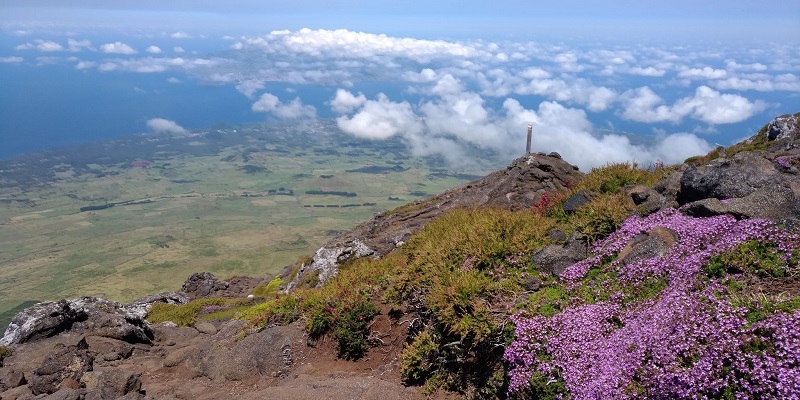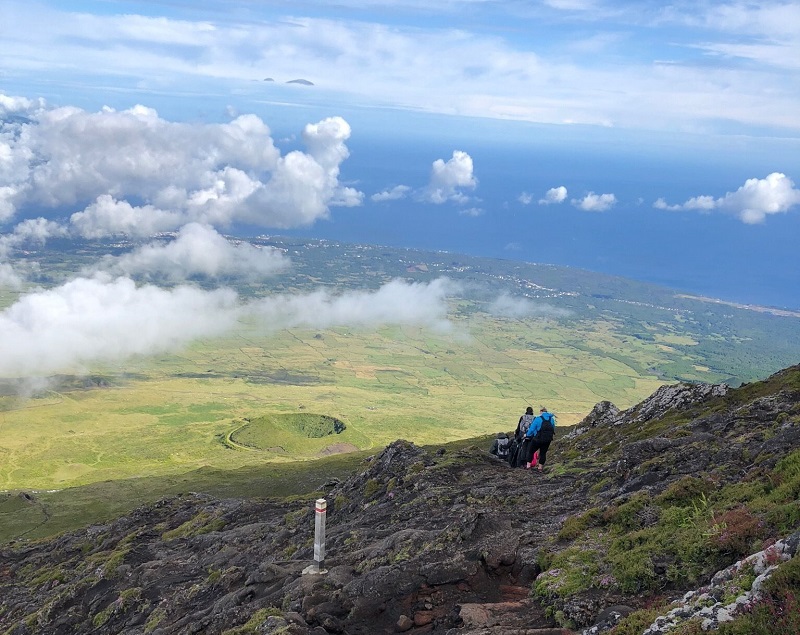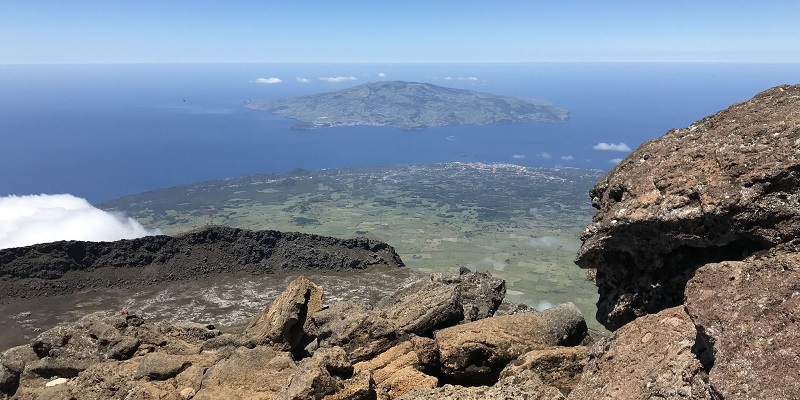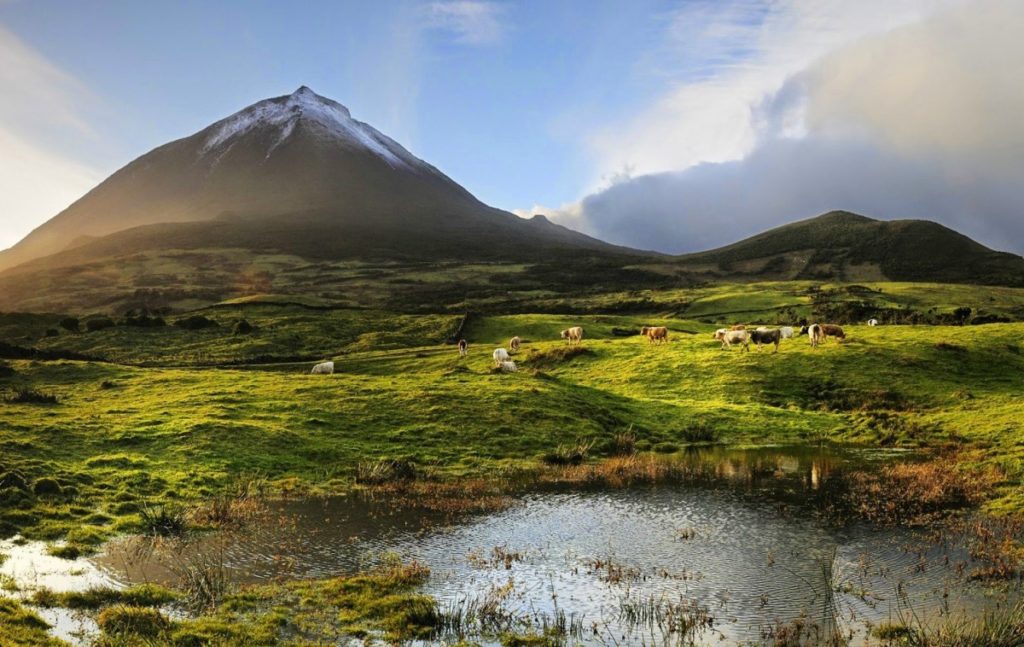Pico Mountain is the highest point in Portugal and the third-largest in the Atlantic, at 2,351 meters above sea level, and is part of a nature reserve that aims to preserve and conserve all of its environmental areas.
The climb to Pico Mountain is one of the extraordinary experiences that everyone should have, becoming essential in the itinerary of your Vacations in Pico.
Pico Mountain has 750,000 years old and its origin is volcanic. It offers tourists a magnificent view of the surrounding nature.
The mixture of the blue of the sky with the blue of the water and all the green of the vegetation is summed up in an indescribable beauty.
Although it is not technically difficult, it is a climb that requires an adequate physical condition and the necessary precautions.
Children under the age of 16 can only take the ascent of the mountain if accompanied by their parents or an adult tutor.
Pico Mountain: The ascent
Table of Contents
The ascent begins at Casa da Montanha, a compulsory stopping point located around 1200 m, where information on the geology, biology, history, and climate of the Pico mountain is available, either in informative panels or in a video format that can be viewed in the auditorium.
In addition, it is at Casa da Montanha that the ascents are recorded and controlled, as well as to ensure that the maximum carrying capacity of the mountain is not exceeded (there is a maximum carrying capacity of 320 visitors per day, as well as simultaneously – between 120 and 200 people – which may require a waiting period until the elevator is authorized).

Pico Mountain – the climbing
The average duration of the climb is around 3 to 4 hours (speed and effort must be managed to avoid too much acceleration of the cardiovascular rhythm).
Those who climb to the top of the mountain will be able to observe a central volcanic crater called Pico Grande. The interior of this crater consists of a lava cone 70 meters deep, called Pico Pequeno or Piquinho (Small Pico), which gives off fumaroles. Its last eruption occurred in 1718. If the weather permits, you will be able to admire the neighboring islands of Faial, São Jorge, Terceira, and Graciosa.
Pico Mountain: The descent
The descent also lasts an average of 3 to 4 hours, so it is important to descend at least 4 hours before sunset).
In total, the trail has a length (round trip) of about 7,600 m (3,800 m from the base to the summit) and a difference of 1,100 m, which is properly identified by 45 wooden markers. (numbered and painted with two red and yellow rail marking lists).
Pico Mountain: The recommended equipment
The recommended equipment for climbing Mount Pico is:
- booting suitable for trails
- light, and cool clothing
- a raincoat (the weather can change very quickly)
- food
- drinks
- and sunscreen.
When you go up or down at night, you cannot forget to take a flashlight.
If you stay overnight, bring sleeping gear.
It is allowed to set up a tent in the mountain crater, but only for one night.

Pico Mountain – the descent
Pico Mountain: Opening hours
01 – 30 April
Monday to Thursday > 08h00 – 20h00
Friday opens at 08h00 and stays open until Sunday at 20h00 without interruptions.
01 May – 30 September
Opened 24/7
01 – 31 October
Monday to Thursday > 08h00 – 20h00
Friday opens at 08h00 and stays open until Sunday at 20h00 without interruptions.
01 November – 31 March
Everyday > 08h00 – 18h00
Closed > 24 December

Pico Mountain – View from the top
Companies that make the Ascent to the Mountain
Currently, it is not mandatory to go up with a guide, it is possible to go up without a guide on the official website.
To do so, you must make a reservation: RESERVATION WITHOUT GUIDE
The terrain you will find varies between earth, rock, gravel, and mud. The vegetation is low and usually just grows off the trail.
There are 47 wooden markers along the trail. The last landmark is located inside the crater and indicates the trail to Piquinho.
The weather conditions in the Mountain are extreme and change very quickly, especially the appearance of fog and rain, which makes recognizing the path very difficult.
In case of fog, you can quickly lose sight of the landmarks, so you should be extra careful to avoid getting lost.
When you pass a landmark, you must find a new landmark within the next 30 minutes. If this does not happen, it will have left the trail. The advice is to go back to the previous landmark and resume the path until you find a new landmark.
The average temperature at the top of the mountain is 10 degrees below that recorded at sea level. On a very hot day, you won’t find any shade all day and on a cold day, it could be negative.
As you can see both in terms of the terrain and the climate, it is easy to find yourself in difficulties, so it is advisable not to make the climb without the presence of a registered guide.
In addition to safety, the experience itself is accompanied by someone who knows everything about the mountain will make your experience much more unforgettable.
There are several companies that offer the service of going up to Pico Mountain.
Some of these companies are our partners, so if you use one of them, you will not only be hiring a company with credits signed in the service, but you will also have access to an exclusive discount.
All of our partner companies are certified and offer a quality service, helping to make the ascent to the Mountain run smoothly and in a familiar and intimate environment, making the experience even more unique.
To find out about partner companies and get a discount, visit our page dedicated to My Azores Home partners.
Visit each of the partner companies as each one offers different services.
To find out about the partner companies for your ascent to Pico Mountain, click on the button below:
Climbing Pico Mountain – credits to MoreReenaHart

Not everyone can, or want, or have time to climb Pico Mountain.
For these, the contemplation of its splendor can be done by the many photos that can be taken from almost the entire island.
There are few places on the island where the mountain is not visible.
Therefore, you are likely to be able to take photos of various locations, always with the mountain in the background.
Of course, sometimes she gets embarrassed and hides behind the clouds.
But apart from these moments, you will be able to take spectacular photos of the mountain, even if not climbing to its top.
And even from below, she has an energy and greatness that leaves no one indifferent.

